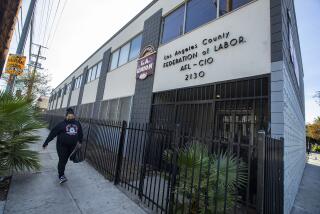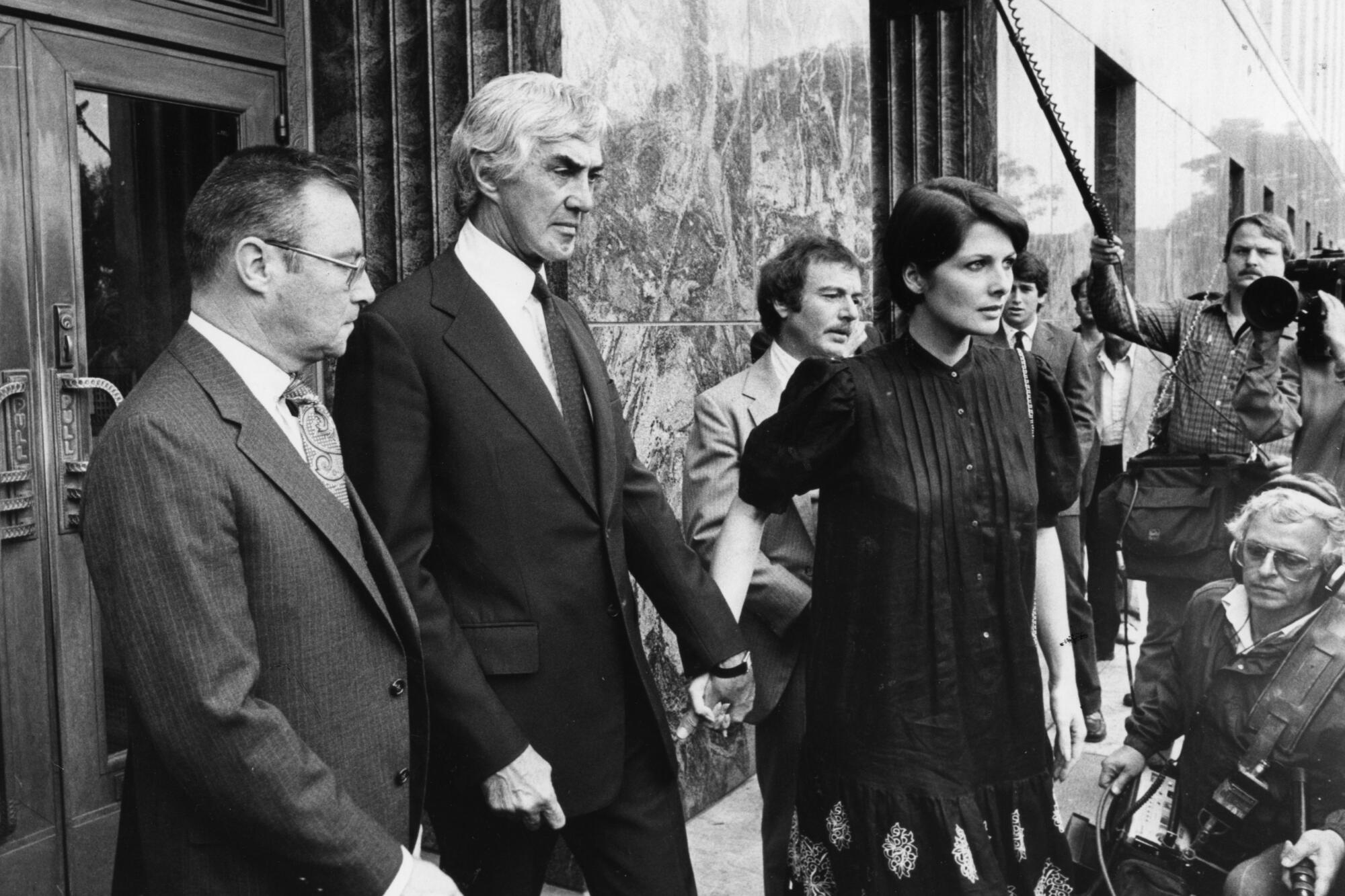
- Share via
Inside Room 501 at the Sheraton Plaza La Reina Hotel near LAX, the trap was waiting for John DeLorean.
It was October 1982, and the maverick automaker had been hemorrhaging money. Ten years earlier, he’d left a $600,000-a-year job at General Motors to pursue the audacious ambition of starting his own car company. The result was a futuristic-looking, stainless steel sports car with gull-wing doors, meant to compete with the Corvette.
In this series, Christopher Goffard revisits old crimes in Los Angeles and beyond, from the famous to the forgotten, the consequential to the obscure, diving into archives and the memories of those who were there.
But it was beset by quality-control problems and, at $25,000, priced too high. His dream was on the verge of collapse, his company hurtling toward bankruptcy.
He had flown into Los Angeles for this clandestine meeting. He entered the hotel room and took a seat among men who had spoken of their underworld connections and had promised to help him.
DeLorean appeared to be in a great mood. One of the men opened a suitcase packed with cocaine, and DeLorean peered inside.

DeLorean was an American original, the rare auto executive who cut a large public profile. He radiated glamour. As a businessman, he was adroit at personal branding years before Donald Trump, a visionary carmaker years before Elon Musk. Profile writers frequently described him as “dashing,” “flamboyant” and “dapper,” a “jet-setter” and “swinger.”
The son of a Ford foundry worker, he grew up in a working-class neighborhood in Detroit and rose rapidly at Chrysler, Packard and General Motors. In 1961, he became chief engineer at GM’s Pontiac division and introduced two popular “muscle cars,” the GTO and the Firebird. By 1972, he was a vice president at GM and spoken of as a likely candidate for the president’s job.
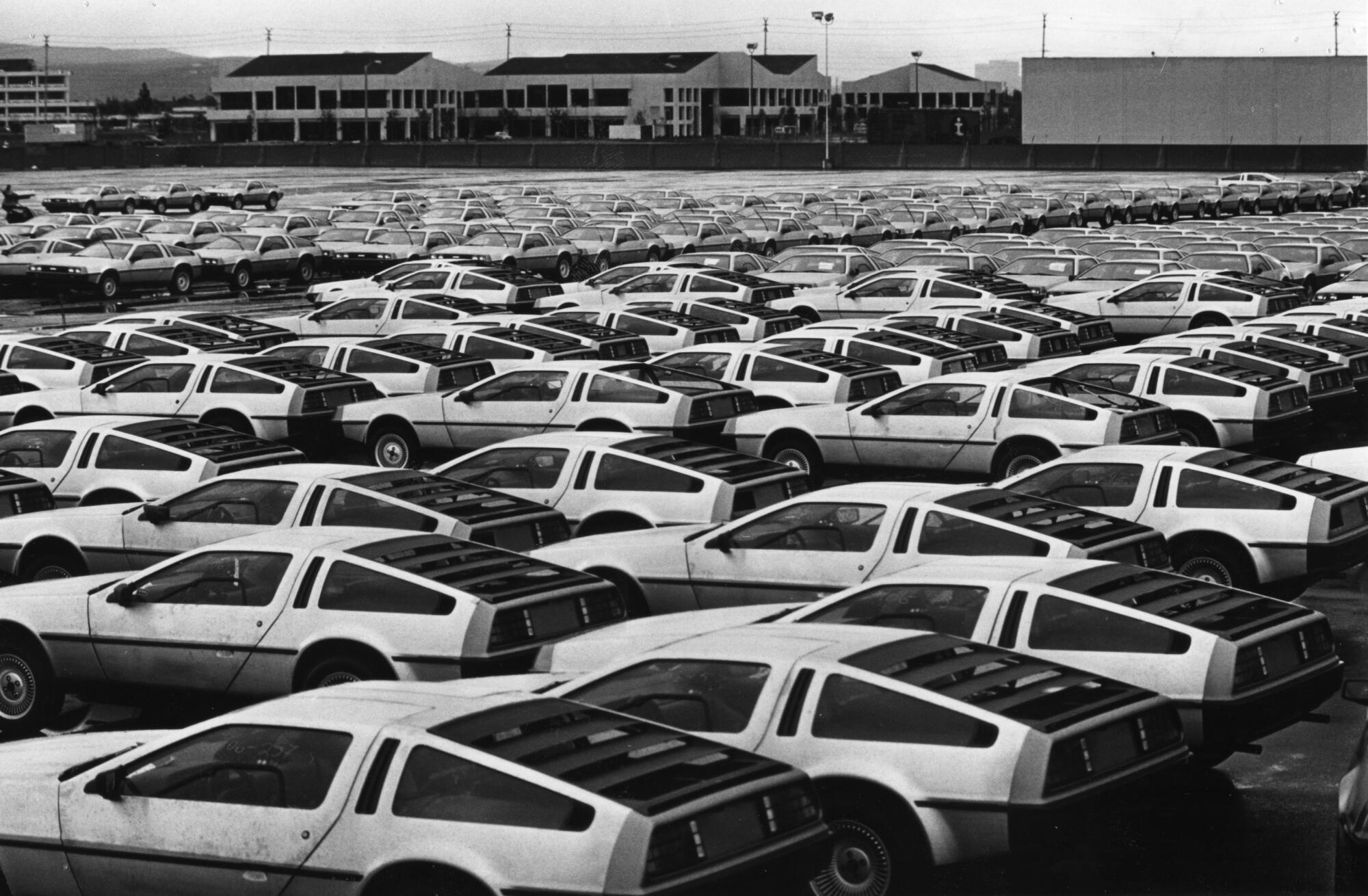
But his outsize personality and flamboyant lifestyle clashed with the company’s buttoned-up culture. He wore scarves and flared pants and open shirts. He had his chin surgically augmented. He grew long sideburns. He dated starlets.
At 48, he married his third wife, 22-year-old model Cristina Ferrare. They lived opulently in a Fifth Avenue apartment in New York and on a 430-acre estate in Bedminster, N.J. Her needlepoint pillow said, “Nouveau is better than not Riche at all.”
In 1973, he quit GM and aimed to do what no one had done successfully since Walter Chrysler in the 1920s: launch his own car company. His vision was to build an “ethical” sports car — safe, practical, impervious to rust and also “very beautiful aesthetically.” He convinced the British government to pour more than $140 million into his project and opened a plant in Northern Ireland, which produced about 9,000 DMC-12s from 1980 to 1982.
Beset by electrical troubles, the car flopped on the market. The British government pulled funding and, in early 1982, declared the DeLorean Motor Co. insolvent.

The men gathered with DeLorean at the Sheraton that day were federal agents and an informant. In grainy footage captured by a hidden FBI camera, DeLorean inspected the suitcase full of cocaine and said, “It’s better than gold.”
Toasting with a glass of Champagne, he added, “Here’s to a lot of success for everybody.”
Federal agents entered to arrest him. The FBI alleged that he was part of a scheme to buy and resell 220 pounds of cocaine from Colombia in a desperate bid to save his company. The charges, which would bring a 67-year prison term if he was convicted, drew massive publicity.
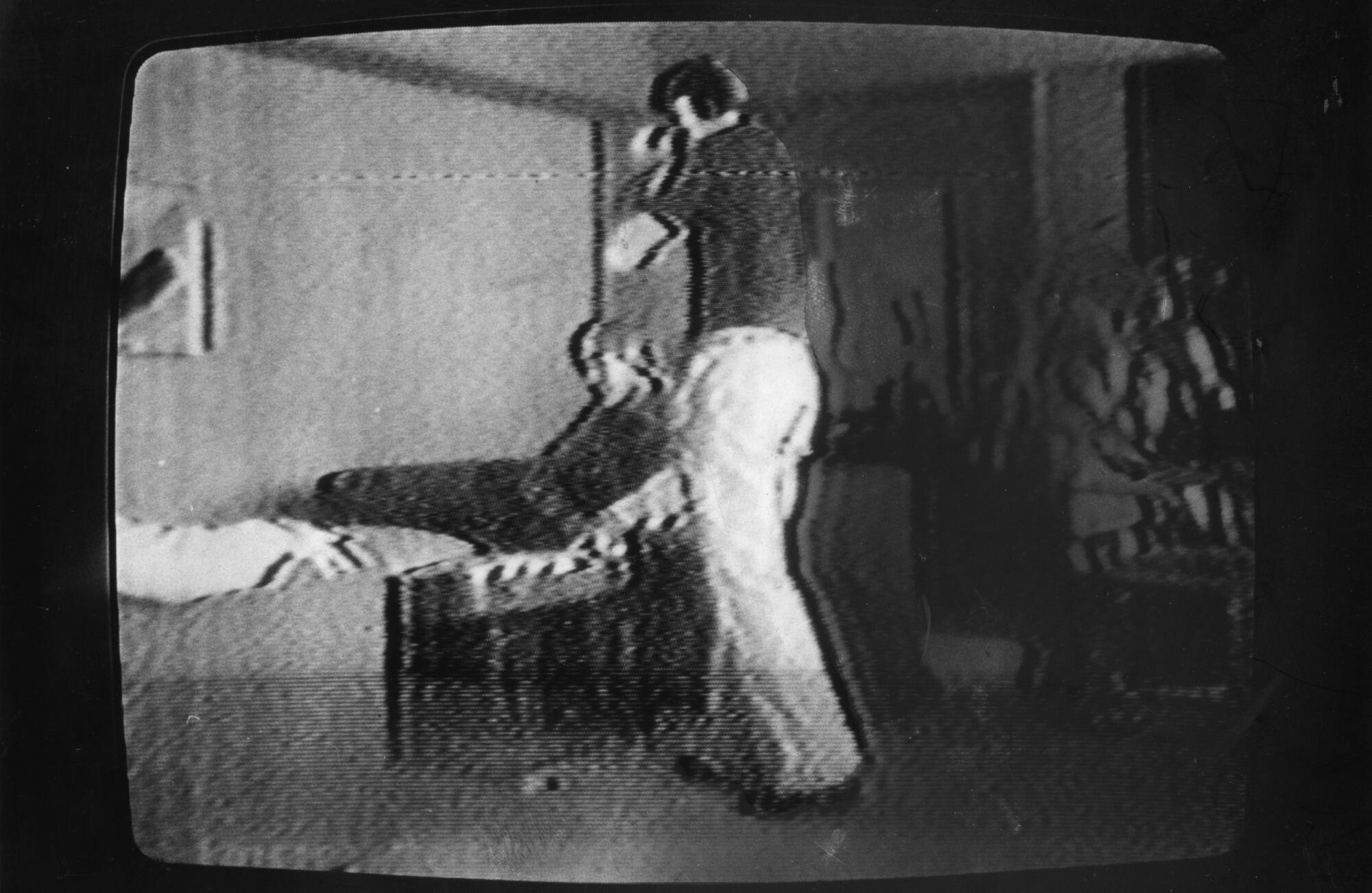
“He was a very famous guy. He had what looked like the magic world,” Donald Re, one of his defense attorneys, told The Times in a recent interview. “It would seem incredible that this guy would volunteer to go through this kind of transaction. ‘OK, I guess rich people can do this kind of stuff’ is what people were thinking.”
Talk show host Phil Donahue gave a sense of the case’s appeal. “We love this kind of story,” he said. “The mighty have fallen.”
Central to DeLorean’s trial, which began in April 1984, was the credibility of the government’s star witness, James Hoffman, a drug smuggler and convicted perjurer who was on the stand for 18 days. He had lived across the street from DeLorean’s home in San Diego County and had turned informer in hopes of leniency. He said DeLorean proposed a drug deal to save his company.
For the defense, the government’s surreptitious recordings were hard to overcome. In one conversation captured by federal agents, Hoffman told DeLorean, “Nobody wants you to do something that you are uncomfortable with.”

DeLorean said he wanted to proceed. He told Hoffman, “I’m relying on you saying that there’s no way of connecting me to this thing.”
“You’re not going to be handling product,” Hoffman said.
In a bravura defense, DeLorean’s attorneys, Re and Howard Weitzman, put the government on trial. They portrayed DeLorean as the victim of a manipulative snitch who had lured him with the prospect of legitimate investments in his company, later introducing the notion of a drug transaction.
“I’m going to get John DeLorean for you guys,” Hoffman said, according to the testimony of a former Drug Enforcement Administration agent. “The problems he’s got, I can get him to do anything I want.”
When DeLorean said he didn’t have money for the deal, agents should have dropped the investigation, the defense said. Instead, they concocted an elaborate financing scheme to keep him involved and stage-managed the sting footage.
Yes, DeLorean had used poor judgment, the defense said, but he had merely been looking for investment money and had committed no crime. Even if the jury decided he had, it was a case of entrapment.
“DeLorean was manipulated,” Re told jurors. “DeLorean was maneuvered. DeLorean was conned. John DeLorean in this case was a victim, a victim of the people whose duty it was to protect him from criminal activity.”
In the recent interview, Re said DeLorean had been tricked into the drug scheme and feared physical harm from underworld figures if he tried to extricate himself. DeLorean did not contribute cash to the deal, Re added, but instead offered an ownership stake in his business.
“This business was the highlight of his life,” Re said. “There’s no way he would have done that unless he felt he was being forced to do it, unless he felt something horrible was going to happen to him.”
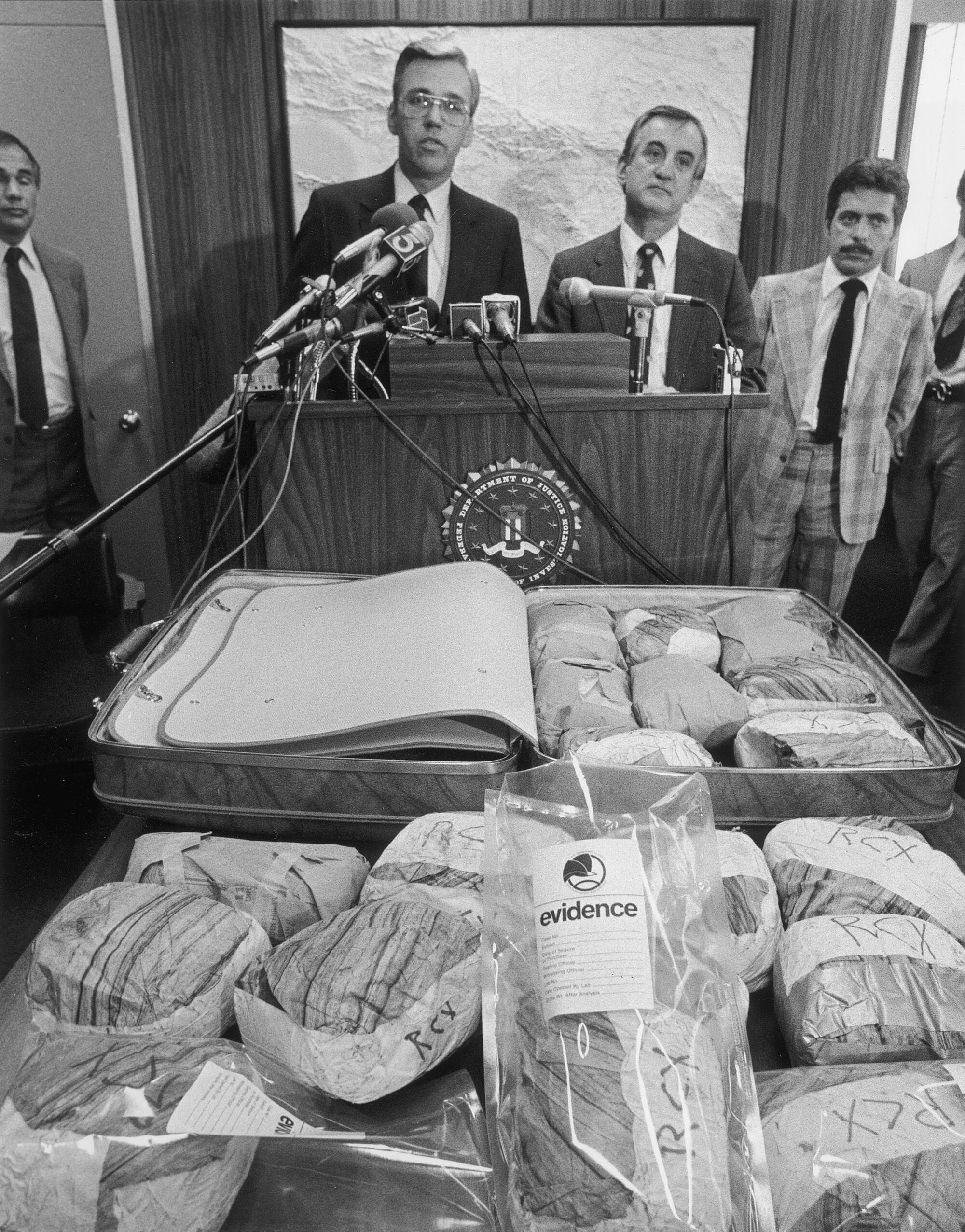
DeLorean, 59, never took the stand during the five-month trial. After 29 hours of deliberation, the jury acquitted him on all counts.
“The way government agents acted in this case was not appropriate,” one juror said. Others said Hoffman was a creep without credibility. Some said DeLorean was morally to blame, even if not legally so: “I do not believe it was ‘innocent.’ ... It was ‘not guilty.’”
Federal authorities acknowledged a big strategic mistake: failing to ensure that DeLorean had put up his own money.
DeLorean said he had aged 600 years in the last two. “My life as a hardworking industrialist has been tattered and torn,” he told the news media. “Would you buy a used car from me?”
DeLorean’s wife, who had been faithfully by his side through the ordeal, soon left him. In an interview a few years later, she said, “I believe that John is a sociopath.”
DeLorean became a born-again Christian and told Playboy that he had been the victim of his own “insatiable pride ... an arrogance that was beyond that of any other human being alive.”
The trial was fresh in memory when the DMC-12 — equipped with the mysterious “flux capacitor”— served as a time machine in the 1985 hit “Back to the Future,” enshrining it in pop culture. DeLorean sent a gushing letter to the filmmakers, who were glad they didn’t opt for the original idea, a time-traveling refrigerator.
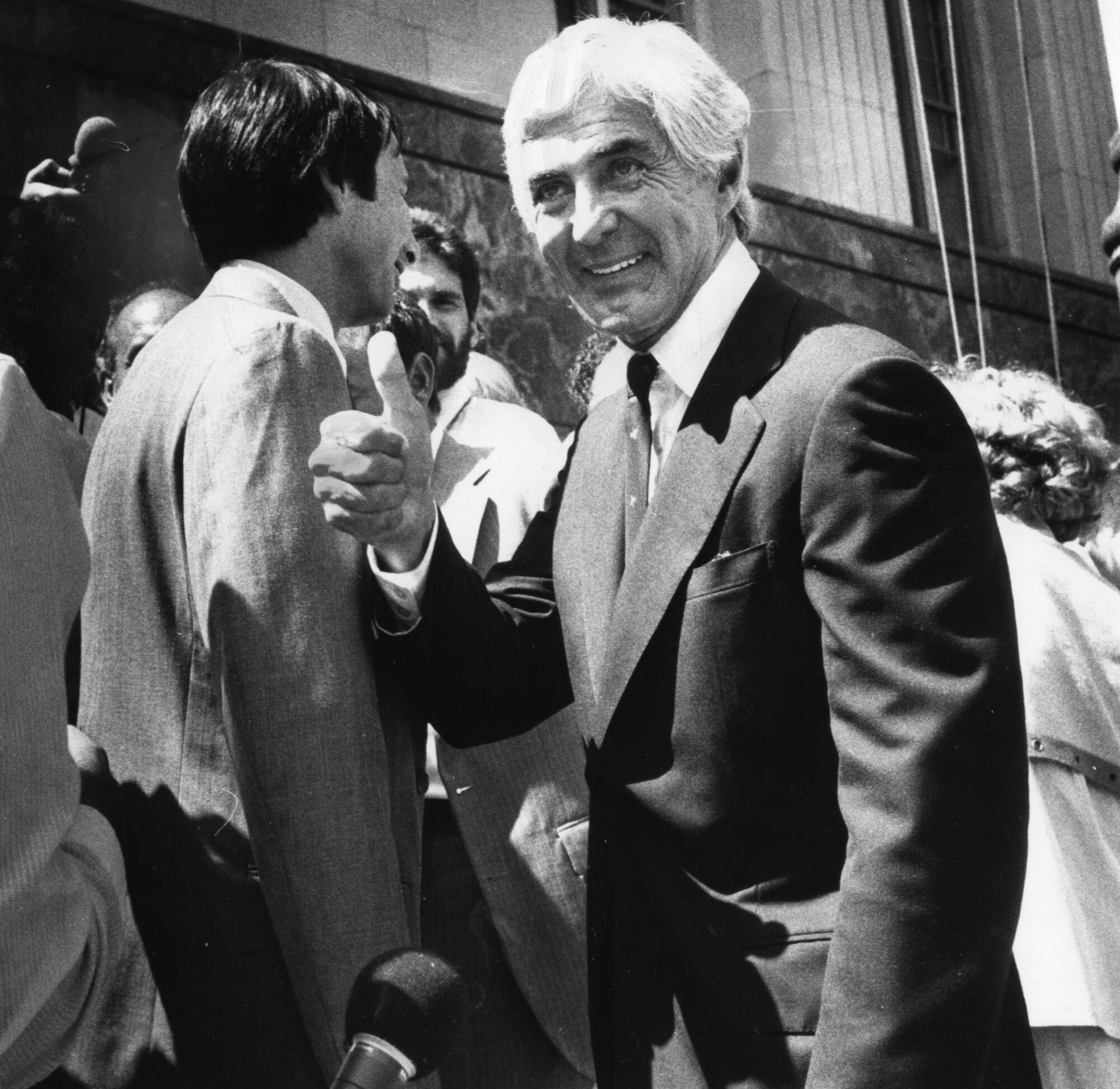
In 1986, DeLorean beat another federal case, this time in Detroit, on accusations that he stole $17.5 million from his investors. But he was saddled with legal bills, and creditors were circling.
He tried to market watches. He spoke of building a “radical new car.” His plans fizzled, and in 2000, the vans arrived at his Bedminster estate to haul away his antiques. He was living in an apartment in New Jersey at the time of his death in 2005, at age 80.
Calling him “the last of the automotive wildcatters,” then-Times auto columnist Dan Neil wrote: “DeLorean enters history not as a visionary but as an arrogant, amoral hipster, a victim of his own toxic vanity.” Weitzman, the attorney who defended DeLorean successfully, said that of his many clients, “John DeLorean had one of the most warped views of right and wrong.”

If you have information on old crimes, famous, once-famous or obscure, contact [email protected]
Tamir Ardon, a documentary filmmaker, got close to the DeLorean family during the 15 years he spent bringing the 2019 documentary “Framing John DeLorean” to the screen. He called the cocaine case “Entrapment 101,” playing out against the backdrop of Ronald Reagan’s war on drugs.
“Morally, John was corrupt. Legally, he didn’t do anything wrong,” Ardon told The Times in a recent interview. “He wasn’t doing drug deals. It just happened to be that’s how they structured the case so it would seem super nefarious and it would be super splashy for Reagan. ... They thought, as long as they get this splashy video of John in a room with cocaine, that was going to be damning enough to a group of 12 regular jurors.”
Ardon said that there are about 6,000 DMC-12s still on the road, and that the pristine ones can fetch six figures. Depending on how old they are, people associate the car with the “Back to the Future” franchise or with the drug trial. The dividing line is around the age of 50.
“The most common remark that any DeLorean owner will get is, ‘Where’s your flux capacitor?’” Ardon said. “And the other is, ‘Where’s the cocaine hidden in your car?’”
More to Read
Sign up for Essential California
The most important California stories and recommendations in your inbox every morning.
You may occasionally receive promotional content from the Los Angeles Times.



